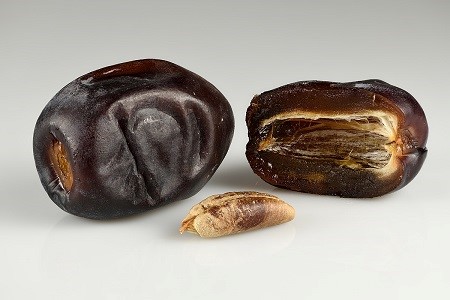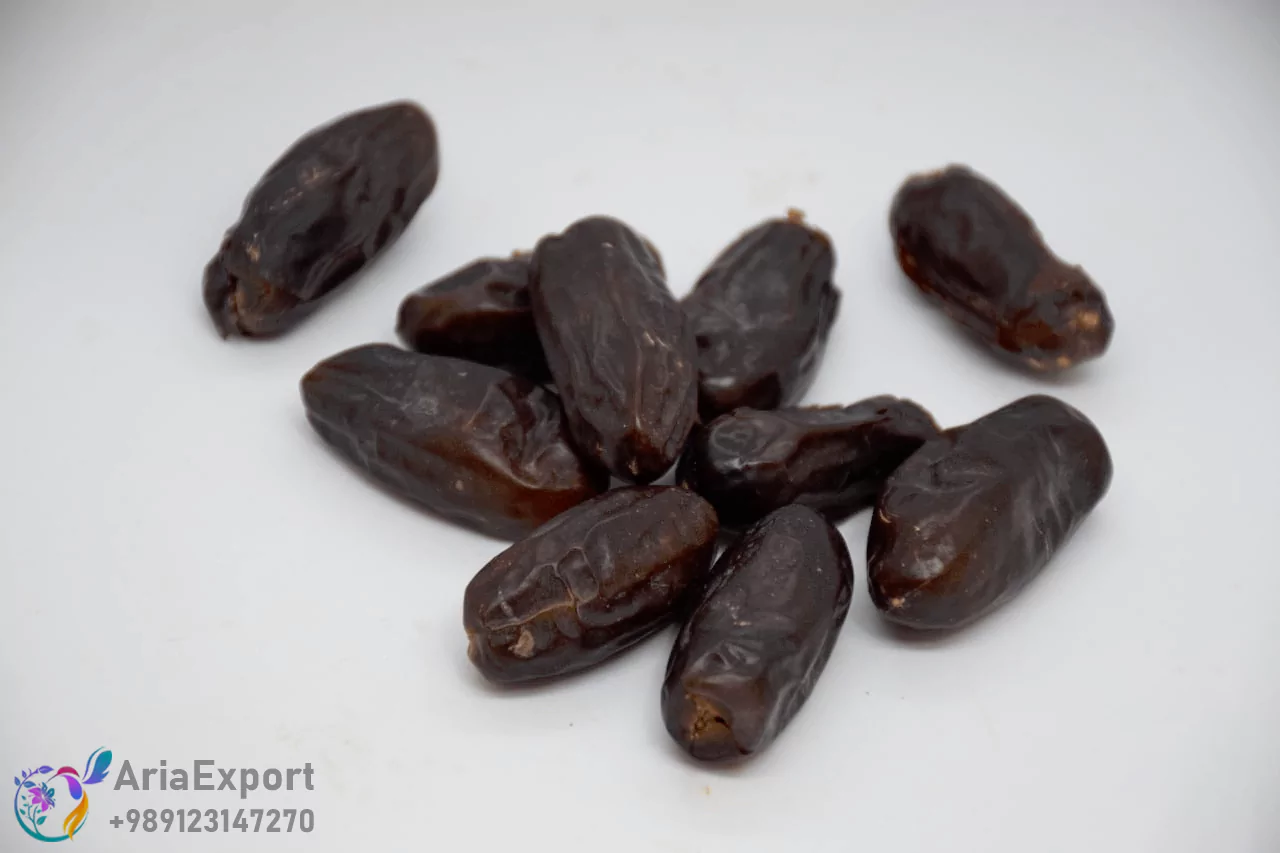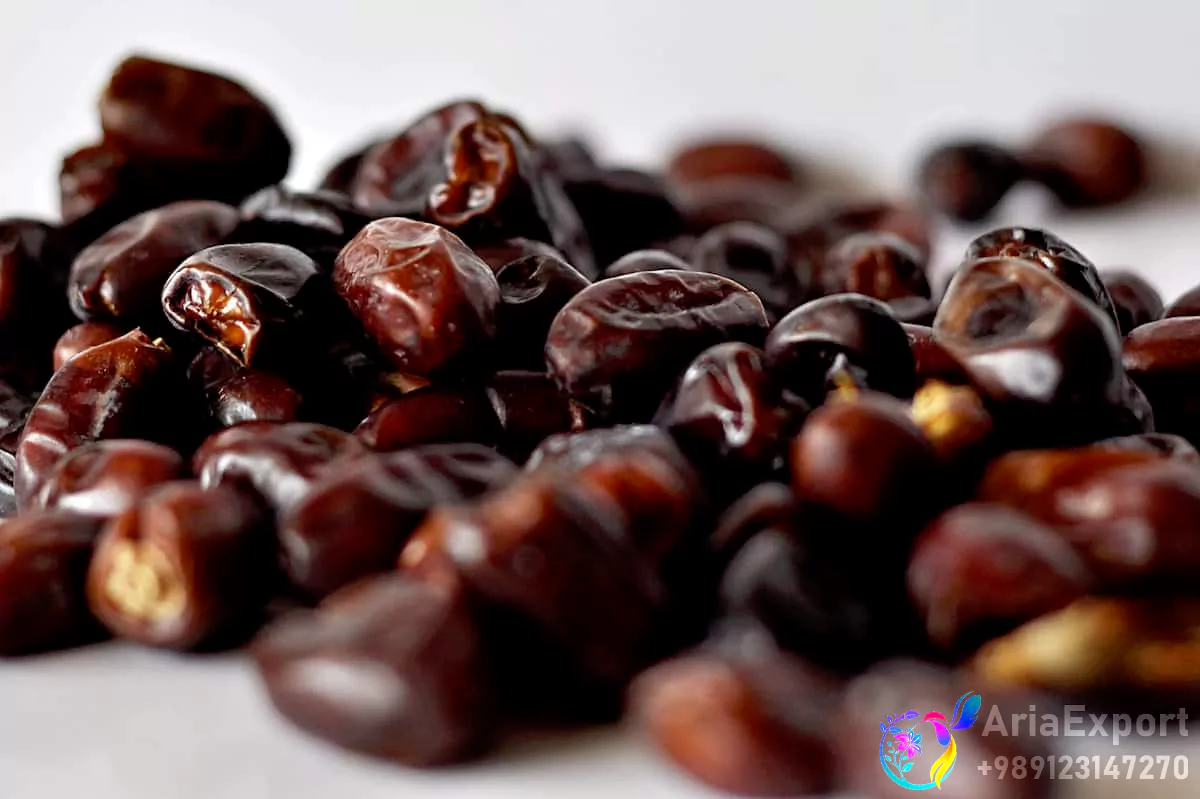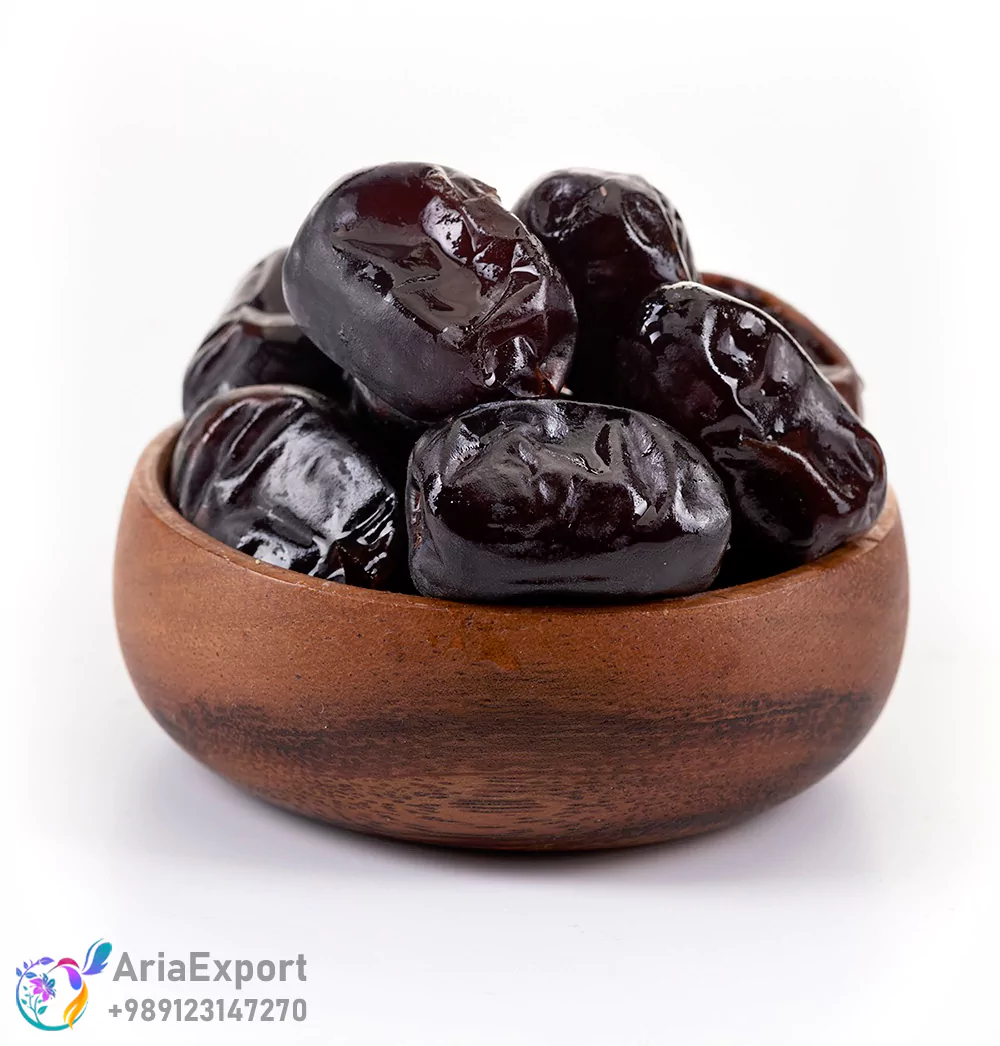
Mazafati dates, often referred to as Bam dates, are a well-known variety hailing from the city of Bam. When fresh and natural, these dates hold between 20 to 25 percent moisture, giving them a distinct texture and appeal. Mazafati dates enjoy remarkable popularity both in global markets and within Iran itself.
What are Mazafati Dates?
Mazafati dates are a premium variety from Bam, Kerman Province, Iran. Known as Bam dates, they contain 20–25% moisture when fresh, distinguishing them from dried fruits. Grown and harvested between late winter and late summer, they undergo four ripeness stages, including the “rotab” phase. Rich in potassium (625 mg/100g), iron (2.7 mg/100g), and magnesium, Mazafati dates offer 282 calories per 100 grams. Their warm temperament and natural sweetness make them ideal for energy, anemia relief, and balancing colder constitutions.
What’s the Temperament of Mazafati Dates?
Mazafati dates have a notably warm temperament, which makes them an excellent choice for individuals with a colder constitution. Eating them helps balance the body’s internal temperature. Their rich, sweet flavor is a telltale sign of this warmth, adding to their appeal.
Nutritional Value of Mazafati Dates
Here’s a breakdown of the nutritional content per 100 grams of Mazafati dates:
| Nutrient | Amount per 100g |
|---|---|
| Energy | 261 kcal |
| Sugar | 46 g |
| Fat | 5.6 g |
| Carbohydrates | 52 g |
| Protein | 1.61 g |
| Iron | 2.7 mg |
| Calcium | 27–70 mg |
| Potassium | 625 mg |
| Phosphorus | 53 mg |
| Sodium | 14 mg |
How Many Calories Are in Mazafati Dates?
The finest Mazafati dates come from Bam in Kerman Province. These dates are typically found in a limited color range either jet black or a medium shade of brown. A 100 gram serving of Mazafati dates contains 282 calories. If you’re watching your diet, there’s no need to worry about weight gain the calorie content is perfectly reasonable and balanced.
Read More: What are Piarom Dates?
Types of Mazafati Dates
When we talk about types, we mean the Mazafati dates grown in different cities. Each region’s version gets named after its hometown and hits the market that way. The most popular and well-known kind is Bam Mazafati. Other types of Mazafati dates include:
- Saravan Mazafati
- Sib-o-Soran Mazafati
- Iranshahr Mazafati
- Rigan Mazafati
- Jiroft Mazafati
- Narmashir Mazafati

Benefits of Mazafati Dates
Mazafati dates packs a ton of health goodies. It’s full of fiber, minerals, potassium, and vitamins. Here’s what it does for you:
- Strengthens bones thanks to its magnesium.
- Cuts diabetes risk when you swap it for sugar.
- Fuels your body with solid energy.
- Keeps your heart and veins healthy, dodging heart trouble.
- Eases stress and anxiety, calming tension headaches or migraines.
- Helps control blood pressure with its anti-stress magic.
- Lowers cancer odds if you eat it regularly.
- Boosts memory, holding off Alzheimer’s.
- Builds blood great for anemia folks.
- Supports your gut with fiber, kicking constipation away.
- Powers up your immune system, fighting off sickness.
- Makes an awesome snack for kids, helping ‘em grow tall and strong.

How to Store Bam Mazafati Dates
For optimal preservation, store Mazafati dates in the refrigerator inside airtight containers. When kept properly, fresh dates can stay perfectly good for up to eight months. Outside the fridge, however, they’ll only remain fresh for five to seven days.
How to Choose Fresh Mazafati Dates
Picking fresh Mazafati dates can be straightforward or a bit tricky, depending on what you know. There are certain signs to look for to ensure quality. Proper packaging is critical; if it’s subpar, the dates are more likely to spoil quickly. When shopping, check that the dates aren’t crystallized with sugar a common flaw. Color is another clue: if you’re unfamiliar with the typical hues of Mazafati dates, you might end up with a less than ideal batch.

Comparing Mazafati dates with other dates
In the table below, you can compare Mazafati dates with other dates such as Medjool, Piarom, and Kabkab:
| Date Type | Sweetness | Size | Color | Calories (kcal/100g) | Texture | Taste/Flavor | Origin | Price | Harvest Season | Storage Conditions | Weight (g per date) | Dimensions (cm) |
|---|---|---|---|---|---|---|---|---|---|---|---|---|
| Mazafati | Very Sweet | Medium | Black to Dark Brown | 282 | Soft, Juicy | Rich, Sweet | Bam, Kerman, Iran | Moderate | Late Winter to Late Summer | Refrigerate in airtight container (up to 8 months) | 20-30 | 3-5 long, 2-3 wide |
| Piarom | Moderately Sweet | Small to Medium | Dark Brown | 309.78 | Semi-Dry, Firm | Chocolate-like | Southern Iran Mountains | High (Rare) | October to November | Cool, dry place (long shelf life) | 15-25 | 3-4 long, 1.5-2 wide |
| Medjool | Very Sweet | Large | Dark Brown | 332.5 | Soft, Chewy | Caramel-like, Rich | Morocco, USA, Middle East | High | Late Summer to Fall | Refrigerate or room temp (several months) | 20-40 | 4-6 long, 2-3 wide |
| Zahedi | Moderately Sweet | Medium | Golden Yellow | 300 | Semi-Dry, Chewy | Nutty, Buttery | Iraq, Iran, USA | Low to Moderate | Late Summer to Early Fall | Cool, dry place (long shelf life) | 15-25 | 3-4 long, 2-2.5 wide |
| Kabkab | Very Sweet | Medium to Large | Dark Brown | 278 | Soft, Sticky | Honey-like, Sweet | Southern Iran | Moderate | Late Summer to Fall | Refrigerate (several months) | 20-35 | 3-5 long, 2-3 wide |
Read More: what are zahedi dates?
Read More: Sayer Dates Calories
Aria Export: Supplier and Exporter of Mazafati Dates
Need Mazafati dates? Aria Export is name you can trust. From Iran, we supply and export fresh Bam dates to you here or anywhere. We pick the good ones, pack ‘em fast, and send them straight from Kerman’s best groves.
FAQ About Mazafati Dates
Below you can read the most important frequently asked questions about Mazafati dates:
1. What’s the temperament of Mazafati dates?
Mazafati dates have a very warm temperament, evident in their intensely sweet taste. They’re especially beneficial for those with a cold constitution, helping to harmonize their body’s natural balance.
2. How many calories are in Mazafati dates?
A 100-gram serving packs 282 calories, making them an excellent energy-boosting snack perfect for anyone seeking a nutritious option that supports weight management.
3. Do Mazafati dates cause weight gain?
With their warm temperament and natural sugars, Mazafati dates are highly energizing. You won’t see unwanted weight gain from enjoying them, and they can even fit into a weight-loss plan with ease.
4. How to Spot High Quality Mazafati Dates?
To snag top quality Mazafati dates, check out the syrup and juiciness. More syrup means better quality. Our tip? Go for packages that feel heavier when you pick ‘em up the juicier the date, the more it weighs.

